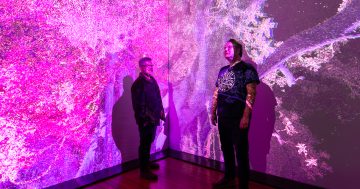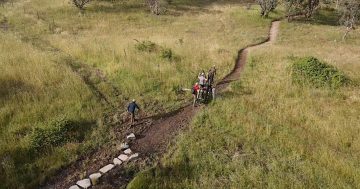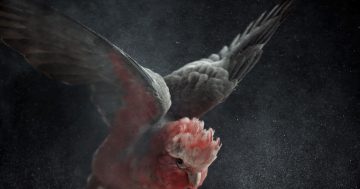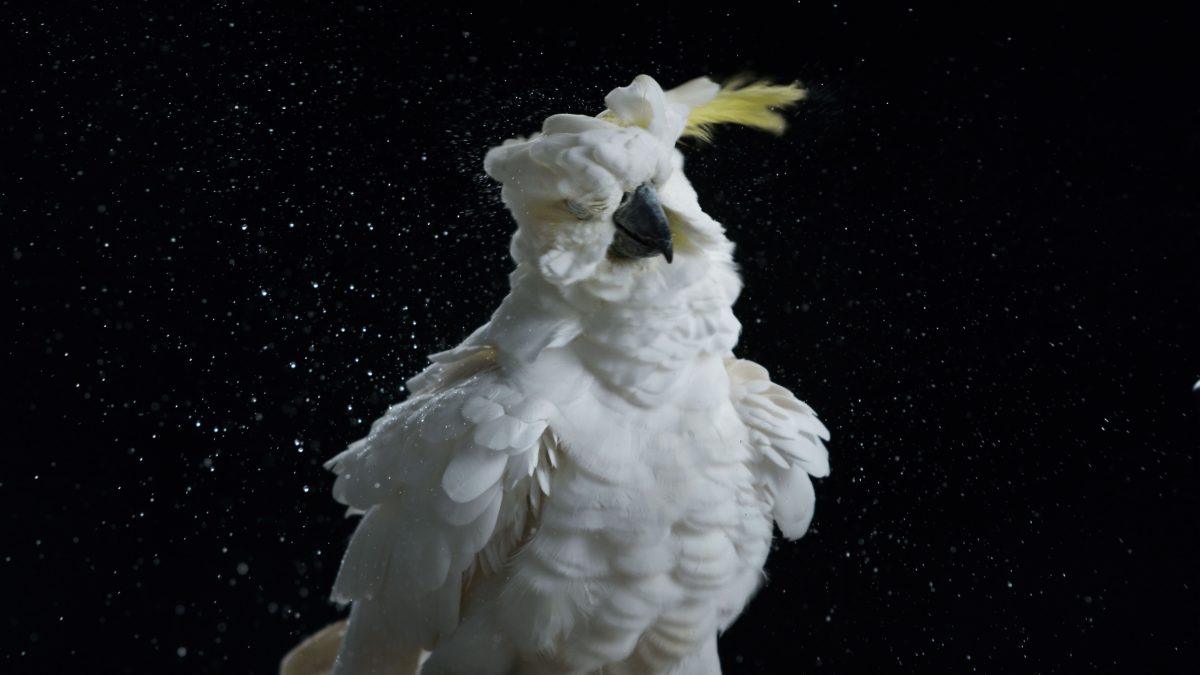
Temple is a large-scale installation combining slow-motion footage of Australian cockatoos with an inky, black reflection pool. Image: Still from Temple by Leila Jeffreys x Melvin J Montalban.
Nestled within the National Film and Sound Archive of Australia is a temple. A peaceful space, of both beauty and reverence. This temple offers time for contemplation and connection, facilitating an appreciation of our place within the universe through communion with nature.
Originally conceived for Vivid Sydney in 2022, Temple is, in fact, a large-scale installation conceived and realised by artist Leila Jeffreys and filmmaker Melvin J Montalban. Housed within an art deco gallery space at the NFSA, Temple combines slow-motion footage of Australian cockatoos with an inky, black reflection pool.
“What we are cultivating with Temple is a space where you can go to meditate on the beauty of nature,” says Jeffreys, whose artistic practice centres on portrait photography of birds.
“All of a sudden, you will find yourself slowing down, stopping your busy life and just being present.”
The contrast between indoors and outdoors, nature and man-made structure, play an important role in guiding this experience; in particular, the connection cultivated between the audience and the beautiful birds captured on film.
“Birds are one of the very few completely wild animals that humans interact with on a regular basis,” filmmaker Montalban explains.
“I think this is why Temple resonates with so many people. It offers a way to connect with them that is really intimate and special.”
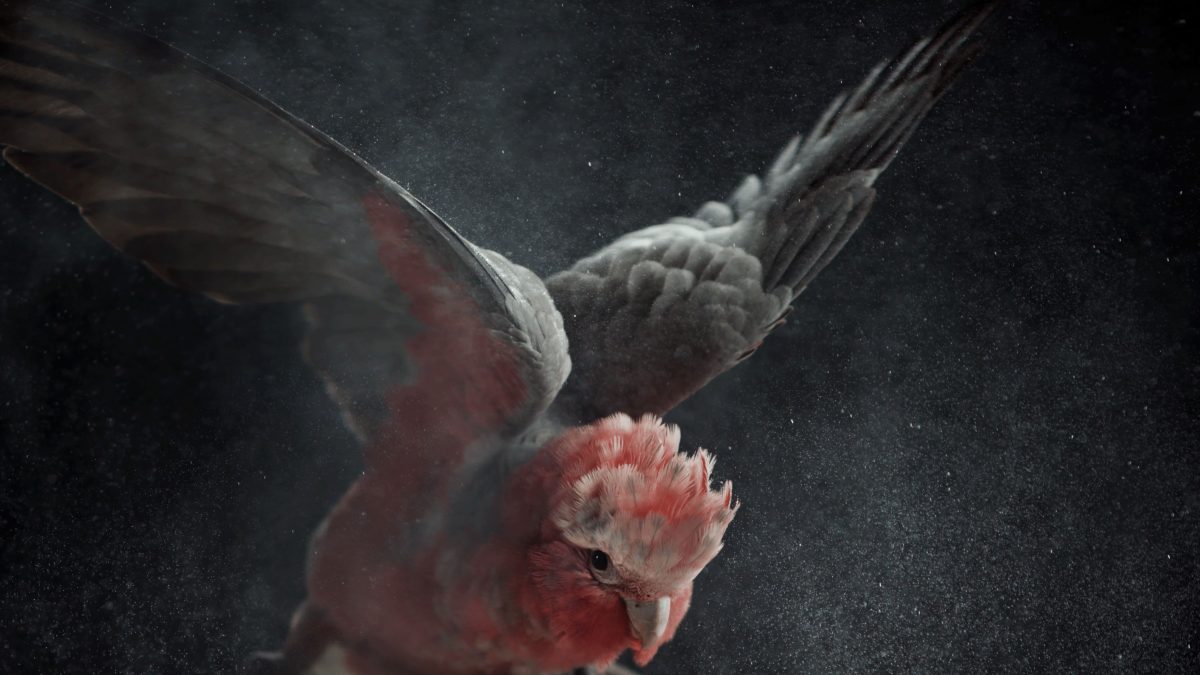
The scale of the installation creates an immersive experience. Image: Still from Temple by Leila Jeffreys x Melvin J Montalban.
In addition to slowing down the movement of these incredible creatures by capturing them at a rate of 1000 frames per second, the scale of the installation renders us humans small in comparison to the now massive birds we are witnessing.
“The work definitely facilitates a perspective change,” Montalban adds. “Not only are we bringing people into a reverent space, we are bringing them closer to an experience of being part of nature.”
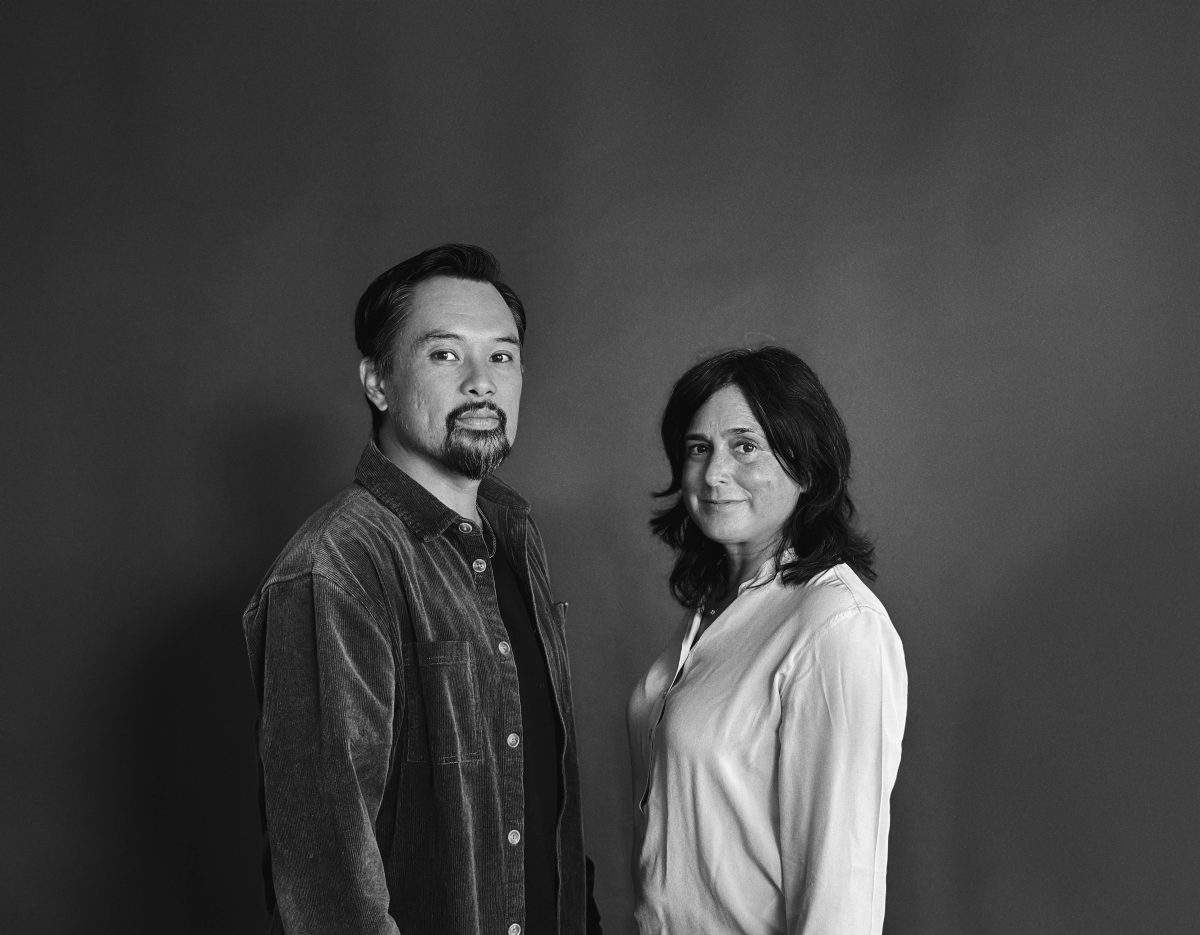
Melvin J Montalban and Leila Jeffreys: “We both have similar ideas and we are so in sync in how we think about creating a work.” Photo: NFSA.
In realising Temple, Montalban and Jeffreys worked with cinematographer Chris Bryan (whose credits include working with David Attenborough on the Planet Earth series) and bird trainer Ravi Wasan from Feathered Friends Bird Sanctuary.
“The birds are rescue birds who have come into care,” says Jeffreys.
“The team [at Feathered Friends] will rehabilitate and release them, and if they can’t be released, which can happen for lots of different reasons, the birds will live with Feathered Friends and still live an amazing life.”
Wasan, also a skilled bird behaviourist, worked with the birds for six months, training them in the kind of movement Jeffreys and Montalban hoped to capture with Bryan.
“What the audience sees is often the culmination of tens of thousands of thoughts and conversations between many people,” Jeffreys adds.
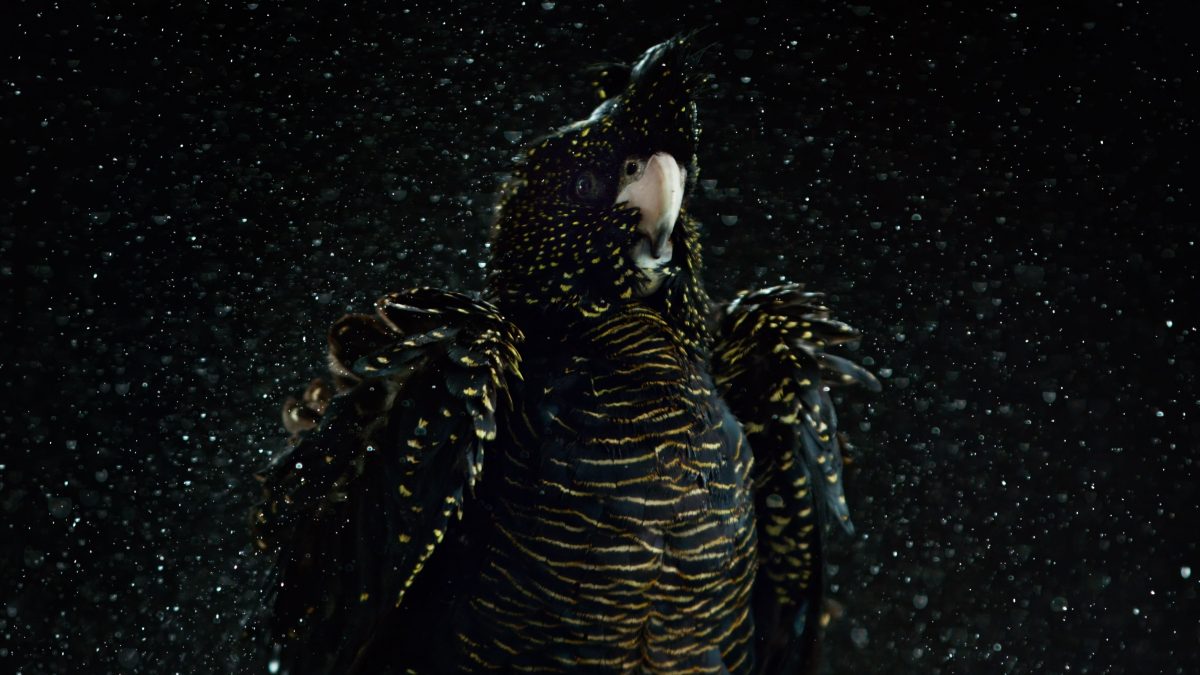
Birds are one of the very few completely wild animals that humans interact with on a regular basis. Image: Still from Temple by Leila Jeffreys x Melvin J Montalban.
The strong creative partnership between Jeffreys and Montalban, in particular, is evident in the quietly powerful distillation of ideas in Temple.
“It’s been a very fluid and natural process of coming together,” Montalban shares of their collaboration.
“We connected over a love of nature and conservation and a love of activism through art. We come at that goal from very different angles, which is why we complement each other so well.”
Jeffreys agrees.
“We both have similar ideas and we are so in sync in how we think about creating a work.
Montalban continues: “We wouldn’t necessarily call this work a call to arms. It serves a different purpose, but in creating empathy and love for nature, we hope that can translate to action. We seek to strengthen people’s connection to nature first.”
For that is the success of Temple, its ability to use feeling and intimacy as a gateway for ideas of conservation, environmental activism and more thoughtful cohabitation within nature.
“We hope to catch people by their hearts,” Jeffreys explains, “and from there, we hope they will want to understand more about these amazing flying creatures and their plight.”
Temple is on show at the National Film and Sound Archive from 5 April to 30 June. Admission is free.












